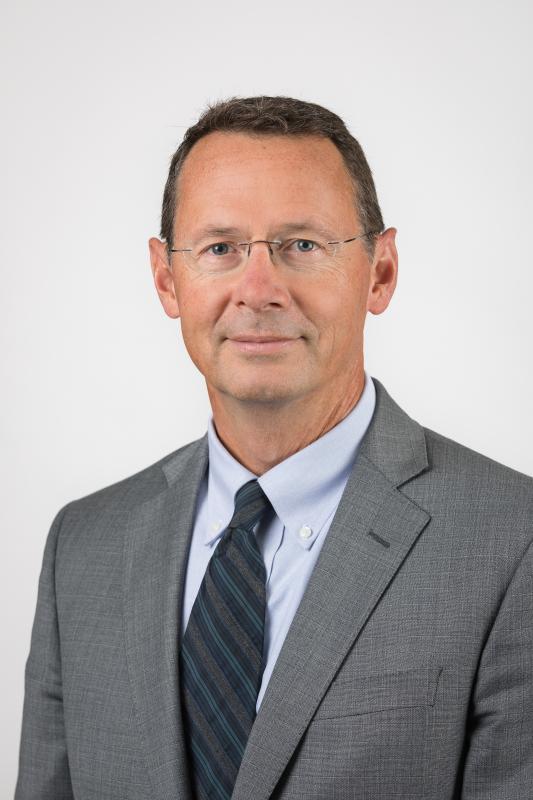Mark Fourre: We’ve been here before, Part II
People often call the COVID-19 pandemic unprecedented. I assure you it is not.
The Plague, measles, polio, the flu and HIV/AIDS – human history has been punctuated with outbreaks of contagious diseases since before smallpox swept through Egypt more than 2,000 years ago.
Oddly, this knowledge offers a bit of comfort. Generations before us faced even greater hardships than those around COVID-19, and they not only endured but found ways to adapt and flourish. They are proof that we will, too.
The experiences of these earlier generations also provide us with a glimpse of our future and can help us understand what life will be like with COVID-19 until we develop a vaccine – and for years after that.
Many in our community will remember growing up during the poliovirus epidemic in the 1950s. Polio, short for poliomyelitis, often produced only mild symptoms such as fever and sore throat. But it also produced paralysis at times, typically in the legs and less commonly in the head, neck and diaphragm.
If you were unlucky enough to have the virus attack your diaphragm, you would eventually stop breathing.
This led to the invention of the iron lung, the precursor to today’s ventilator, which has played a key role in our fight against the COVID pandemic. In the 1950s, polio caused upwards of 15,000 cases of paralysis a year, according to the Centers for Disease Control.
The fear was widespread. Many families kept their children in the house except to go to school. Playgrounds and community swimming pools were empty. Some urban parents sent their children to live with relatives in the country.
Sound familiar?
This is how life was until a polio vaccine became widely available in the late 1950s – a childhood deferred, with lasting personal and social implications.
This began to change in 1955 when medical researcher Jonas Salk announced the first effective and easily produced polio vaccine. Subsequently, Albert Sabin developed a second vaccine. The impact was immediate and lasting. Today, thanks to vaccines, polio has been all but eliminated in the U.S.
The lesson is this: By preventing paralysis and death, polio vaccines have allowed the generations since the 1950s to live healthier and more productive lives. When we discover a vaccine for COVID-19, it too will make life safer for us and generations to come.
I have lived through two similar developments during my own medical career as an emergency physician.
The most challenging experience for any emergency physician is caring for a critically ill or injured child when death is a very real possibility. This was certainly the case when I cared for a young child with a life threatening bacterial infection. Streptococcus pneumoniae, also known as pneumococcus, is a bacterium that can cause bloodstream infections (sepsis), pneumonia, bacterial meningitis and other infections. The youngest patients are at greatest risk because they have not yet developed any immunity to the bacteria.
That all changed 20 years ago with the introduction in 2000 of a vaccine that was safe and effective for children under 2 years of age.
Invasive pneumococcal disease decreased dramatically – from 100 cases per 100,000 people in 1998 to just nine cases per 100,000 in 2015, according to the Centers for Disease Control.
The vaccine has saved the lives of countless young children over the past 20 years, and it continues to do so today.
I witnessed a similar story around Haemophilus influenza type b (Hib), a bacterium that can infect the lining of the brain and cause meningitis.
Although several different bacteria cause meningitis, Hib was the most common cause. Many children recovered from the disease, but others were left permanently paralyzed, deaf, blind or mentally impaired. Tragically, many died.
Hib can also cause bloodstream infections, pneumonia, cellulitis, arthritis and epiglottitis. Perhaps no disease was more frightening to an emergency physician than this last one. The epiglottis sits on top of the windpipe and normally only covers the airway when a person swallows. When infected, the epiglottis can instead continuously block the airway, causing suffocation and death.
As a young physician and father when the Hib vaccine was introduced in the early 1990s, I remember how, seemingly overnight, the vaccine eliminated a disease that had been catastrophically affecting 20,000 children every year in the U.S.
Similar stories can be told about measles, mumps, pertussis – and smallpox.
Smallpox is among the deadliest diseases we have faced. It is estimated to have killed 90 percent of the Native American population after being brought. to North America by European colonists. Throughout history, smallpox has averaged a 30 percent mortality rate.
Inoculation attempts against smallpox began as early as the 1500s in China. However, it was the rigorous vaccination campaigns by the world’s national governments in the 1950s and 1960s that lead the World Health Organization to declare the eradication of smallpox in 1980. It remains the single greatest public health achievement ever recorded.
In some ways, those smallpox campaigns also introduced us to our first immunity passports, a topic that has garnered much discussion as the world explores how to resume its economic life in the middle of a pandemic.
Those of us who were children during the smallpox eradication campaign will remember lining up at school to get our vaccine shot. We were all scared because we knew it would hurt. Later, the skin would blister, then scab over. Ask anyone who grew up during the eradication campaign to roll up their sleeves and you will still see the telltale scar that proves they got the shot and were now immune to the disease.
It is, for many of us, a sign of having participated in the greatest public health achievement ever recorded.
What I find most inspiring, though, is how these vaccination stories repeat themselves. Over and over again vaccines have helped us overcome disease to live safer and healthier lives. This gives me hope for a COVID-19 vaccine and confidence that today’s generation will participate in their own great public health achievement.
Mark Fourre is CEO of Pen Bay Medical Center and Waldo County General Hospital
Event Date
Address
United States


























